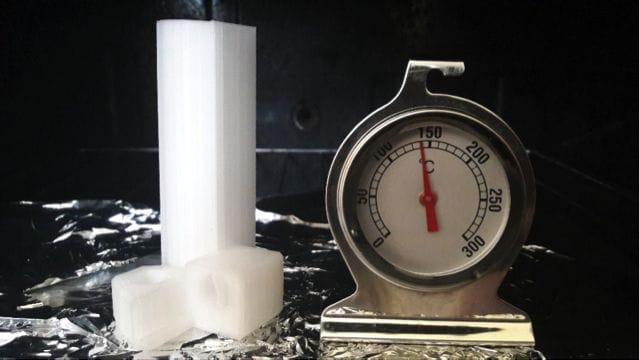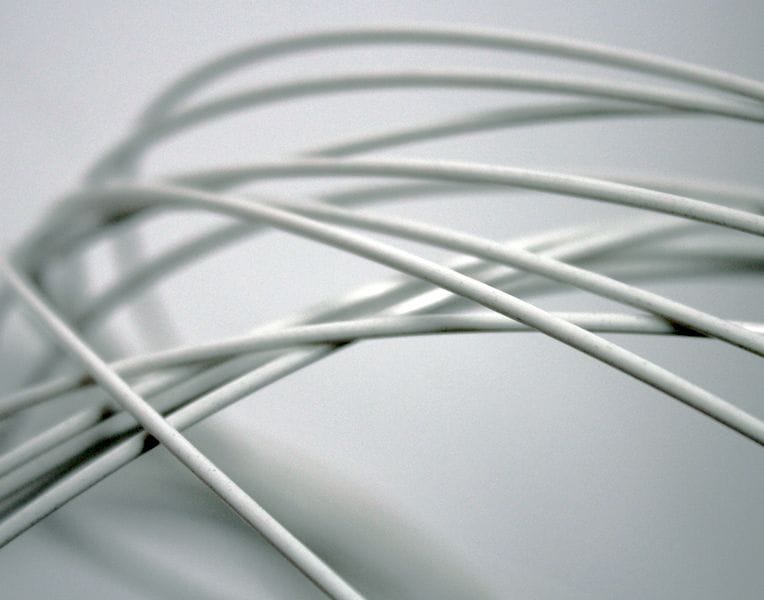
A new 3D printer filament proposes a much higher deformation temperature.
PLA is one of the most popular 3D printing materials for desktop 3D printers, and there is good reason for this:
- It exhibits very little warp when printed, making print failures far less likely
- It’s inexpensive
- It’s widely available from multiple sources in many formats and colors
- It emits fewer nanoparticles when heated
- It has a somewhat pleasant aroma when printing
- It’s reasonably strong
But after all those good points, it has one definitely bad point: it has low heat resistance.
And that temperature is more frequently encountered. This is known as the glass transition temperature, the point where deformation can occur. That’s bad news if you’re hoping a PLA-based object will hold it’s shape at a higher temperature.
For typical PLA material, this temperature is only around 60C, a point achieved in many frequently encountered real life situations. Hot water, summer car interiors, sunlight exposed surfaces all can easily exceed 60C, threatening to turn your fancy 3D print in a droopy mess within a short time.
Thus for many applications PLA is not an option and designers must turn to higher temperature materials such as ABS, which has a glass transition temperature of around 105C. That enables functional use of the print in many more situations.
But ABS introduces several problems, not the least of which is a significant warp factor, making 3D prints a lot more challenging.
Now a Hungary-based company named Philament has announced a new product they call “PLA Engineering”. They explain:
This PLA-based filament offers enhanced possibilities for industrial applications. The thermal stability of objects printed with Philament Engineering is extremely high, they could bear up to 140°C heat, without any heat treatment after printing. Philament Engineering is much more resistant to other external impacts also than normal PLA materials: it is a high impact and shockproof product.
Wait, 140C? That’s really high, beyond even ABS.

It’s not clear from their material whether 140C is the official glass transition temperature for PLA Engineering, or another thermal specification. But if it is, then this could be a highly useful material that has the advantages of PLA (because that’s what it is) and beat the thermal characteristics of ABS.
One interesting note is that Philament recommends a print surface temperature of 100C, far higher than is typically recommended for PLA. Usually you’ll see PLA print surface temperatures of only 50-60C. This could correspond to a much higher glass transition temperature. ABS materials usually recommend a print surface temperature of 100C, while you would risk a very messy result if attempting to 3D print PLA on a 100C surface.
Philament offers the new PLA Engineering in three colors (white, blue and black), in two formats (1.75mm and 2.85mm) and in 750g spools. The cost is €45 (USD$53), which is not a bad price for such an unusual material.
Via Philament

